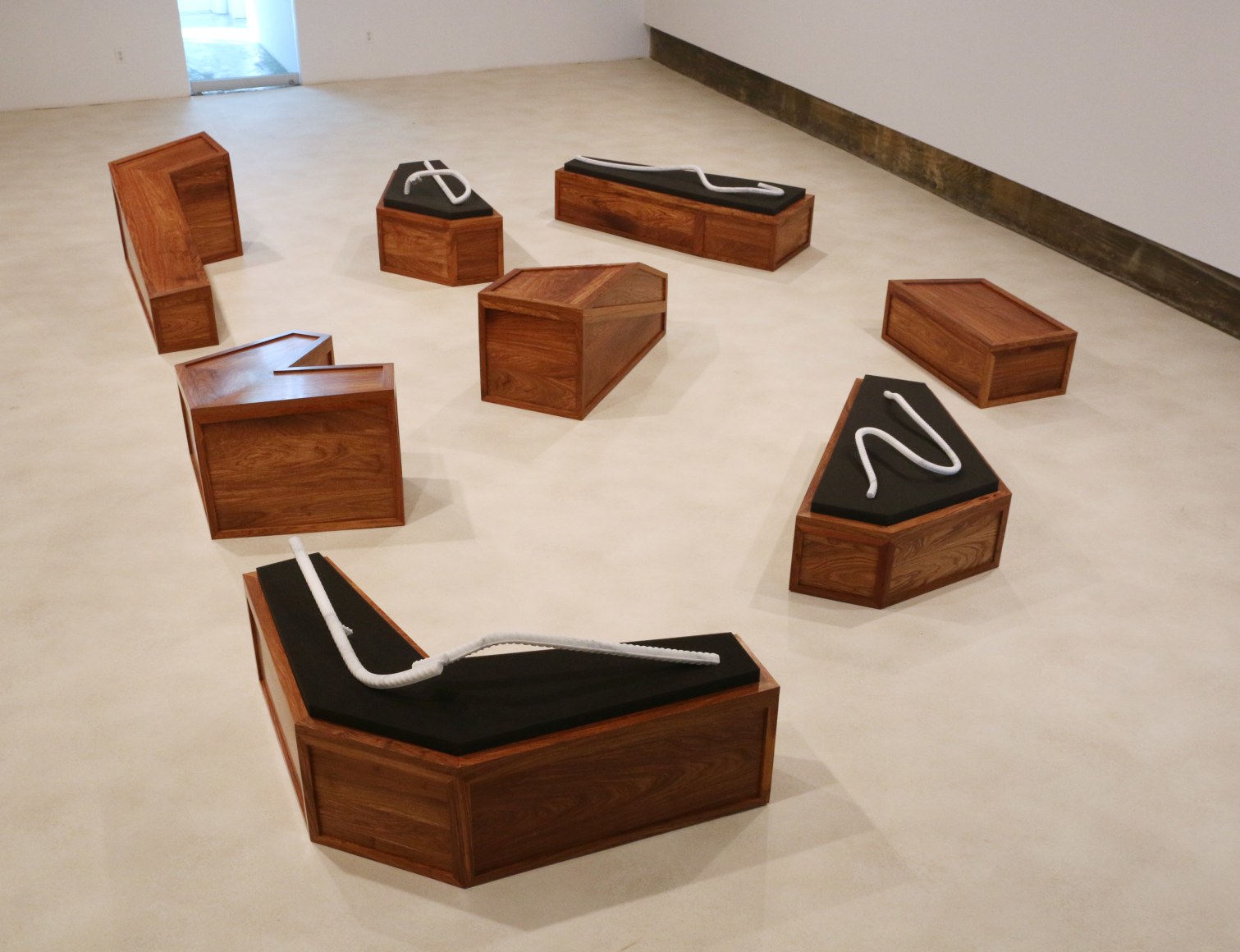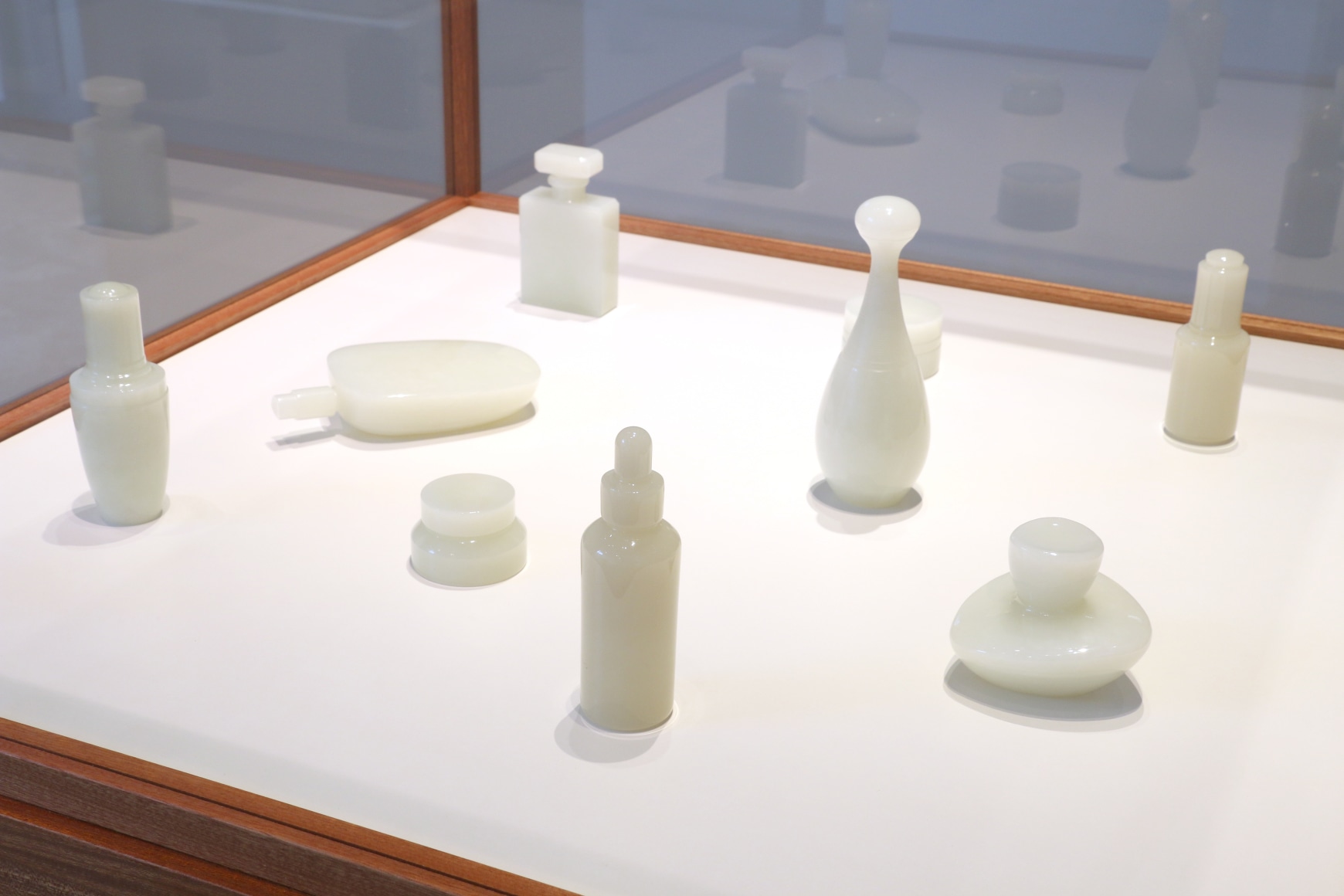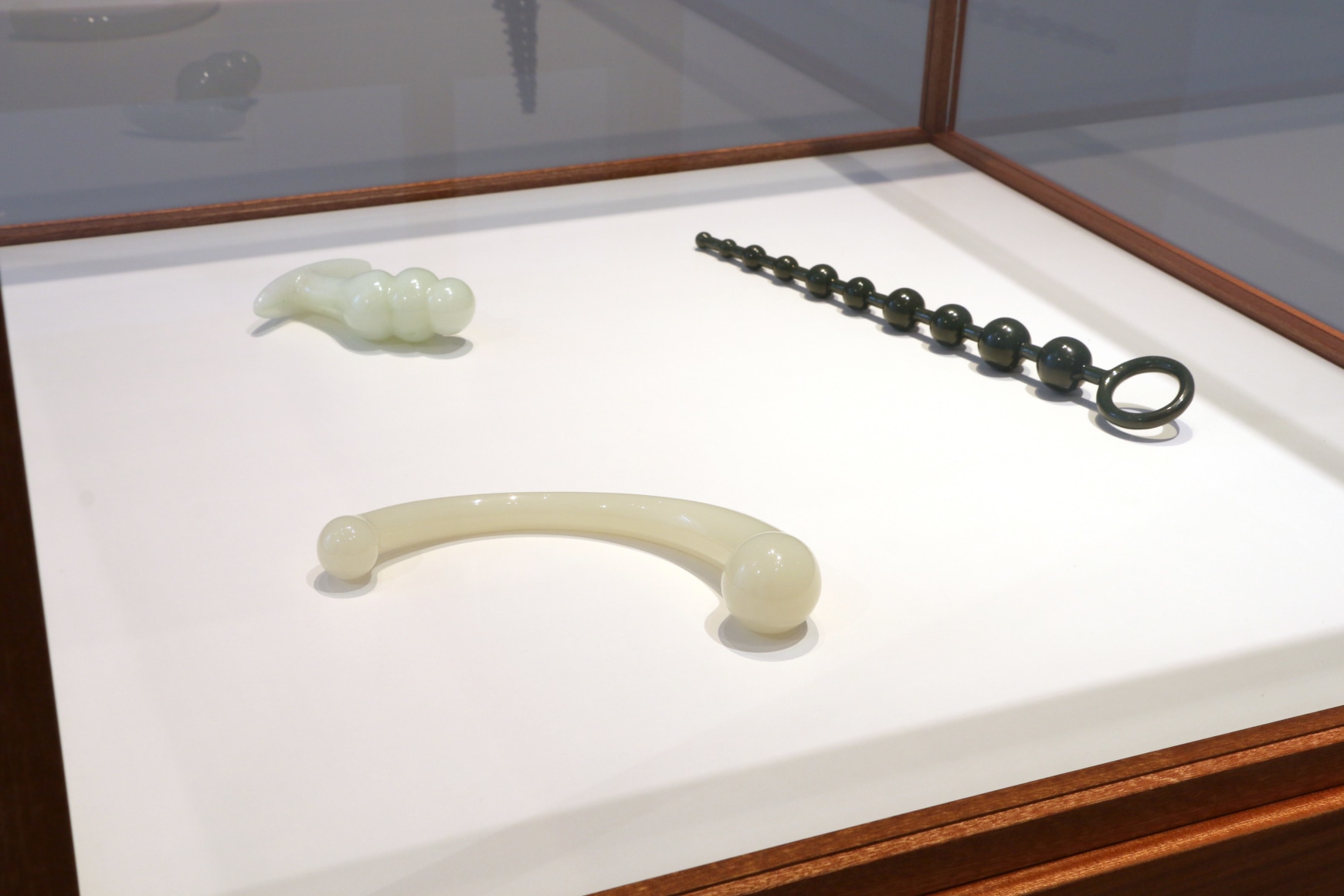Chambers Fine Art is pleased to announce the opening of two concurrent exhibitions devoted to new and conceptually related earlier works by Ai Weiwei. Ai Weiwei: Part I will open at Chambers Fine Art on September 11, 2014. Ai Weiwei: Part II will open at Francis M. Naumann Fine Art on September 12, 2014. Still unable to leave China three years after his “conditional release” from 81 days detention from April 3 to June 22, 2011, Ai Weiwei has nevertheless been able to oversee the production of an important new body of work which has only contributed to his international fame. This year alone there have been major museum exhibitions at the Brooklyn Museum and the Martin Gropius Bau, Berlin. Curated by John Tancock, the two-part exhibition focuses on a group of new works at Chambers Fine Art and a selection of earlier works at Francis M. Naumann Fine Art that offers insights into the convergence of conceptual and politically engaged aspects of his practice.
Chambers Fine Art will be exhibiting for the first time Rebar Caskets I-VIII, the latest in a series of works that owe their origin to the 8.0 magnitude earthquake that struck Sichuan province, China on May 12, 2008. Increasingly outspoken on the political situation within China, Ai formed a Citizens’ Investigation to establish the names of the thousands of schoolchildren who had been killed in shoddily constructed schools in Wenchuan district. In addition to this activity, he purchased about 200 tonnes of twisted rebar salvaged from the destroyed buildings and used this in several large installations: Wenchuan Steel Rebar, first seen at the Joseph H. Hirshhorn Museum and Sculpture Garden, Washington D.C. in 2012; Forge at Mary Boone Gallery, New York in 2012; and Straight in Zuecca Project Space, Venice in 2013. Still haunted by the earthquake and its aftermath, Ai focuses on single pieces of twisted rebar in the new series of Marble Rebar. Carved in marble, these faithful replicas of steel originals are housed in caskets made from huali wood, the precious material used in Chinese furniture of the Ming and Qing dynasties. Noting that he never really separates “art, architecture, design, and even curating”, Ai’s caskets are simultaneously abstract sculptures and containers for delicate marble forms that are heavily laden with meaning.
In complete contrast is a new series of small sculptures carved in jade, a material of particular cultural significance in traditional Chinese art. When Ai returned to China in 1993, he spent a great deal of time in the antique markets that sprung up during the period when so much archeological material was being unearthed, gaining considerable expertise in the process. Since jades were of particular fascination to him, it is not surprising that he should have decided to use this venerated substance himself in a new series of small jade sculptures. Despising any attempt to replicate or modernize traditional Chinese stylistic features, however, he transforms contemporary luxury products such as perfume bottles, cosmetic jars and sex toys into suavely beautiful abstract forms.
The selection of works at Francis M. Naumann Fine Art ranges in date from 1986 to 2014. The earliest work Hanging Man (1986), a wire clothes hanger bent into the profile of Marcel Duchamp, reveals the young artist’s enthusiasm for the artist who was to influence him in many ways, notably in the use of the readymade and in his attitude to figures of authority, whether political or artistic. The attitude to symbols of power so liberally dispersed in the photographic series Study of Perspective (1995 – 2011) became increasingly personal as Ai’s confrontation with the authorities reached a climax in 2011. The 2009 photograph Illumination was the first major skirmish in the series of events that led to his 81 day detention in an unknown location in 2011.
Occupying the center of the gallery and exhibited for the first time is the maquette for one of the six dioramas constituting S.A.C.R.E.D., the meticulous presentation of Ai’s extended captivity. Relying on his extraordinary visual memory, Ai supervised the recreation of his humiliating daily routines down to the smallest detail. This privileged glimpse behind the scenes offers a moving insight into the circumstances behind the creation of recent works such as the pair of handcuffs carved in huali wood, a means of detention recreated in a precious material.
Other recent works such as Forever Duo (2013), a spare presentation of the bicycles that first appeared in his oeuvre in 2003 and a trio of Han dynasty vases dipped in metallic automobile paint (2014) for the important exhibition at Martin Gropius Bau, Berlin, attest to the way in which insights first offered by Duchamp continue to inspire creative transformations in Ai’s multi-faceted practice.
前波画廊诚挚地宣布艾未未双个展——《艾未未I》将于9月11日在前波画廊开幕,及《艾未未II》第二天9月12日在弗朗西斯·M·瑙曼画廊开幕。艺术家在2011年4月3日被拘留,直到6月22日才被“假释”,三年后的今天他依然没有能拿回自己的护照。然而这并不能阻止他远程指挥着其作品在世界各地的展出,仅今年他就已举办过两个大型美术馆个展——纽约的布鲁克林博物馆和柏林的马丁•格罗皮尤斯展览馆。此次的双个展由唐冠科博士策划,在前波画廊的展览集中推出了其一系列的新作,而在弗朗西斯·M·瑙曼画廊则侧重于能够展示其多年来政治及概念性创作的经典作品。
作品《大理石钢筋与盒子I-VIII》是艺术家受2008年5月12日发生在四川八级大地震的启发而创作的最新作品,并在前波画廊首次展出。汶川地震中许多学校因豆腐渣工程而导致教学楼倒塌,几千名学生不幸丧生。地震后艾未未成立了“死难学生调查活动”以统计准确的死亡学生的人数及每个亡者的姓名。他从汶川灾区的废料场购买了200吨废墟钢筋,并以此创作了几件大型装置作品,如在华盛顿赫希洪博物馆和雕塑园中首次展出的《汶川钢筋》(2012),装置作品《熔炉》(2012),以及在威尼斯祖埃卡计划空间中展出的钢筋作品(2013)。由于艾未未至今仍旧被汶川地震所困扰,他在作品《大理石钢筋与盒子》中专注于每根钢筋的扭曲,以大理石为媒材,并将这些被逼真复制、惟妙惟肖的钢筋装在盒子中,盒子的取材来自类似于明清家具中所用的贵重花梨木材。对他而言,艺术、建筑、设计以及策展息息相关。这些盒子既是抽象的雕塑,同时也是饱含深意、用来保护脆弱大理石雕塑的容器。
与此截然不同是一系列小型玉器雕塑。当艾未未1993年回到中国时,随着出土文物涌现,他开始流连忘返于当时兴起的古玩市场并积累了大量知识,因而对他最为精通玉器的方方面面也就不足为奇。虽然在他此次展览的新作系列中采用了充满文化象征的玉器为媒材,但出于反对现今众多复制或写实化处理中国古典玉器的做法,艾未未选择将化妆品、香水等奢侈品转变成了极为简单却又充满魅力的抽象形态。
在弗朗西斯·M·瑙曼画廊的展览涵盖了他从1986年至2014年间的作品。其中最早的作品《衣架人》(1986)是用钢丝衣架弯折而成的杜尚侧面肖像,展现了当时作为一名年轻艺术家,艾未未对其前辈杜尚的尊敬。艾未未的艺术创作在许多方面曾受到杜尚的启发,尤其体现在他对现成品艺术的运用以及对当权者的态度上。如摄影系列作品《透视研究》(1995-2011)就充分展示了艾未未对权力象征的态度,这样的对抗在一系列事件后于2011年达到了高潮,最终导致他在不为人知的地点被监禁了81天,2009年的作品《照明》见证了这一系列事件中首次发生的重要冲突。
占据画廊中心位置的作品是《神圣S.A.C.R.E.D.》六个三维模型之一的的初步设计,一丝不苟地重塑了艺术家遭受秘密监禁的真实场景。靠其过人的视觉记忆,艾未未栩栩如生地展现了他被监禁过程中的日常生活起居及受到的非人道待遇。此设计模型为作品《手铐》打下了铺垫,淋漓尽致地呈现出其创作背景。《手铐》也同样采用了花梨木这一珍贵材料。
其它的近期作品包括《永久一对》(2013),这系列自行车作品从2003年开始进入他的创作。同时包括艺术家于2014年为马丁·葛罗比乌斯博物馆创作的一组三件汽车喷漆汉朝陶罐,展现了杜尚对其多元化创作手法的持续影响。



